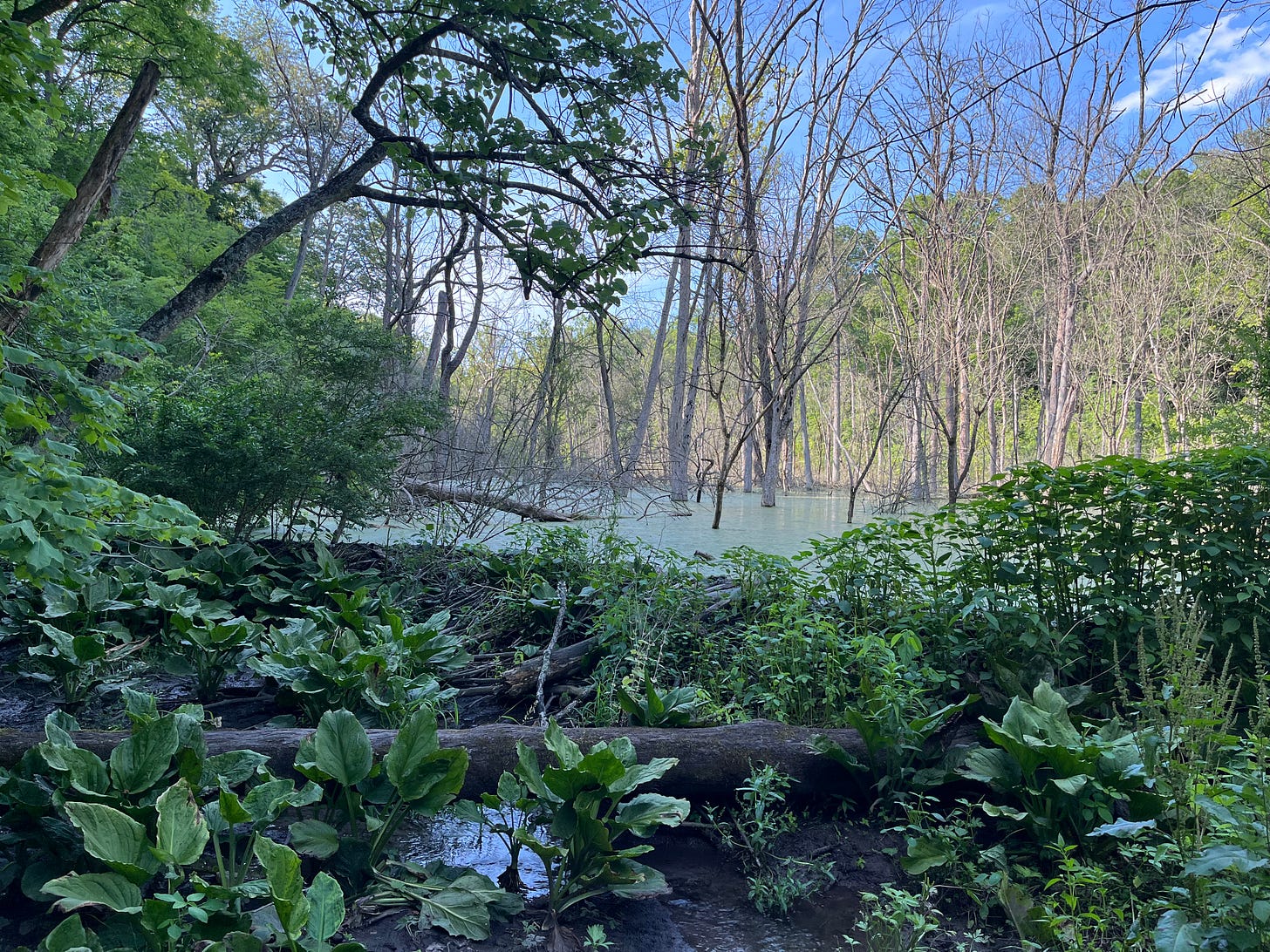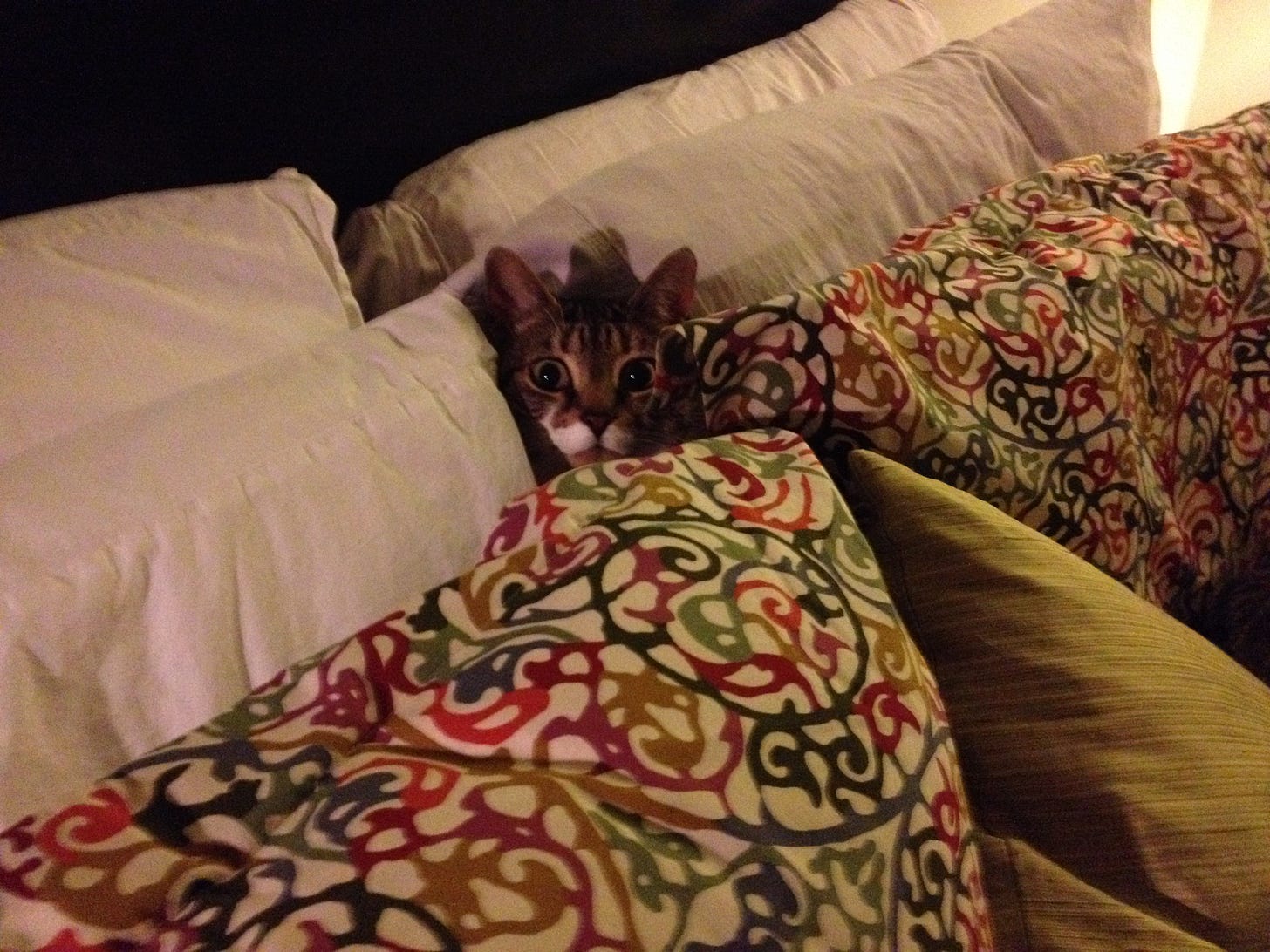This post goes out to both free and paid subscribers, but if you are not already a paid subscriber and value this effort and our growing community, please consider upgrading to a paid membership. Thanks in advance for your financial support of my work —it’s what allows me to keep researching and writing!
And a HUGE THANK-YOU to the flurry of new paid subscribers I’ve had recently! Your financial support lifts me up and keeps me writing!

”Glen Helen is the legacy of [Antioch College] alumnus Hugh Taylor Birch, who, in 1929, donated the wooded glen to Antioch College in memory of his daughter, Helen. With this gift, a foundation was laid to establish the Glen Helen Nature Preserve. Additional gifts have expanded the preserve, which now encompasses 1,125 acres, all accessible from a 15-mile network of footpaths. Antioch College completed a conservation easement in 2015 through the Tecumseh Land Trust to ensure it would be preserved in perpetuity against development.”
I put together a few articles for your reading and learning pleasure this holiday weekend, and shockingly, they are all uplifting. Government, nonprofits and ordinary people coming together to help their neighbors, larger communities, fellow creatures and their habitats. What could be a better way to celebrate our nation’s independence than to show we care about our greater good?
— First up is a June article from Business Insider that touts some good news out of Denver, Colorado: The city, together with The Colorado Trust and an anonymous foundation has provided $9.5 million since the fall of 2022 directly to homeless people with resounding success:
Denver released the project's one-year report on June 18, showing that 45% of participants secured their own house or apartment after receiving basic income for 10 months. They also experienced fewer emergency room visits, nights spent in a hospital or a temporary shelter, and jail stays. The report estimates that this reduction in public service use saved the city $589,214.
According to the founder and executive director of the Denver Basic Income Project, Mark Donovan, "What is fundamentally different about our approach is the way that we start from a place of trust.”
And according to what I have personally experienced and read, trusting a recipient with cash is the opposite of government programs like food and health care assistance, which have onerous and unrealistic requirements to obtain and do not provide cash, but instead are pre-loaded cards with restrictions on what you can buy. One unfortunate example I’ve mentioned before is that the SNAP Benefit Program (food stamps) allows you to buy all the soda, chips and candy you’d like, but not a hot rotisserie chicken. These benefits are lifesavers for recipients, but should not come with ridiculous restrictions.
— In other positive news from out west, courtesy of the Los Angeles Times, California has recently authorized the return of land to the Shasta Indian Nation, after it was taken by eminent domain over 100 years ago to build dams. As part of ongoing projects to remove unnecessary dams in the U.S., which I wrote about late last year, the Klamath Dam was removed, and the land it flooded, a total of about 2800 acres, will be returned to its rightful inhabitants.
“Having access to our ceremonial sites, including the site of our First Salmon Ceremony, is critical to the spiritual and emotional health of our people,” said Janice Crowe, chairperson for the Shasta Indian Nation…Returning the land allows the Shasta Indian Nation to complete the Shasta Heritage Trail, an educational pathway whose design incorporates Native art along with informational placards that share the history of the Kíkacéki [the traditional name of the land], Crowe said in a statement.
To be filed under the Don’t Hold Your Breath Department, the article ends by saying : “It’s unclear when the ancestral lands will be officially returned to the Shasta Indian Nation.”
— We’re out west again, this time featuring an Oregon “horse detective” in an article published today in the Washington Post. I’m amazed at the dedication of people like Clare Staples, who buys wild horses and donkeys rounded up by the Bureau of Land Management, and works to unite horses separated from their herd mates, so they can run free on her 9,000 acre Bend, Oregon ranch. Most of these magnificent animals are saved from confined, cruel conditions and eventual slaughter.
“I thought I could become a horse detective of sorts and help reunite some of them,” she [Clare Staples] said… She’s purchased dozens of horses over the years at Bureau of Land Management auctions, including about 15 mustangs specifically so she could reunite them with other horses at her sanctuary that came from the same wild herds, she said. Portland’s KOIN 6 recently reported on her efforts.
Staples works with professional photographers like Scott Wilson, of Photoadvocacy.org, to reunite horse families based on photographic evidence of wild herds.

— I’ll end with a fun story from the midwest, published in the Washington Post yesterday. Have you taken a “cat tour” of your neighborhood, or any neighborhood? John Edwards from Minneapolis just hosted his 7th annual cat tour in late June. What started as a joke has turned into something quite popular—this year, about 500 people turned out to view the felines residing in the Lowry Hill East neighborhood of Minneapolis. You’ll need to register in advance if you want your cat to be admired, usually through windows from the safety of your home, although some residents bring out their cats in strollers for their “meet and greet” with the crowd.
“It really is just getting together with your neighbors, going for a walk and looking at cats,” said Taylor Dahlin, who lives in a nearby neighborhood and has attended five cat tours over the years. “I’ve never heard of anything like that. It’s just such a fun way to spend an evening.”… Community building is Edwards’s main goal for the annual tour, and he says: “I’ve come to really appreciate how much people enjoy it.”

________________________________________
Let me know what you think of these stories in the Comment Section below.
As always,













Share this post